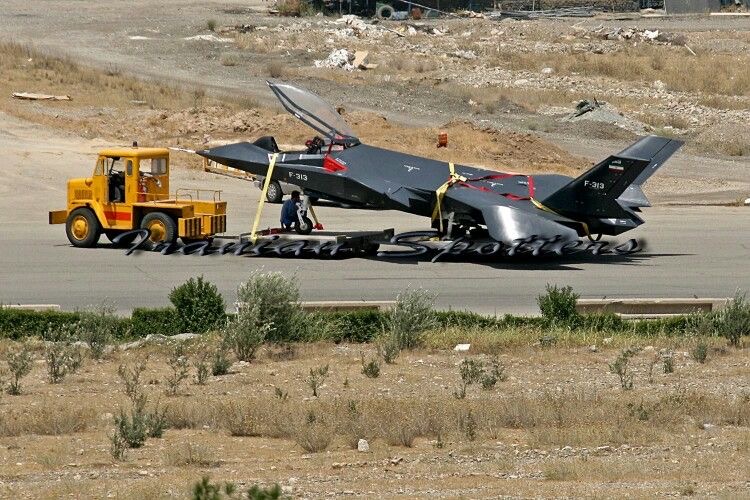
The Qaher F-313 is one of Iran’s most talked-about yet controversial military projects—a supposed fifth-generation stealth fighter that has generated both intrigue and skepticism since it was first unveiled in 2013. The aircraft was presented by Iranian officials as a symbol of the country’s self-sufficiency in defense technology, designed and built entirely by domestic engineers under the supervision of the Iranian Ministry of Defense and the Islamic Revolutionary Guard Corps (IRGC). However, despite its dramatic debut and claims of advanced capability, the Qaher F-313 has remained more of a concept than an operational aircraft, raising questions about its true nature and purpose.
When Iran unveiled the Qaher F-313, it claimed the jet could rival Western designs such as the F-22 Raptor and F-35 Lightning II. Officials described it as a multi-role stealth fighter capable of engaging both air and ground targets while operating from short runways. The design, they said, featured radar-evading characteristics, advanced avionics, and the ability to carry both domestic and foreign-made missiles. To the Iranian public, it was presented as proof of national ingenuity and a step toward breaking dependence on foreign technology amid international sanctions.
However, aerospace analysts and defense experts quickly noticed inconsistencies. The aircraft shown during the 2013 unveiling appeared too small to fit a modern jet engine, with a cockpit that looked more like a mock-up than a functioning flight deck. The landing gear was simplistic, and the materials appeared lightweight—closer to fiberglass than the composite alloys used in real combat aircraft. The general consensus was that the Qaher F-313 was a full-scale model rather than a flyable prototype.
In 2017, Iranian state television released footage claiming to show the Qaher taxiing on a runway, and officials suggested that a prototype was undergoing ground tests. Yet no verified flight footage ever followed, nor have there been credible reports of the aircraft entering production or service. Instead, the program seems to have evolved into a conceptual and experimental project—a testbed for Iran’s aeronautical research rather than a true operational platform.
Despite the skepticism, the Qaher F-313 has symbolic importance. It serves as a message to both domestic and international audiences that Iran continues to pursue self-reliance in military technology. The country has made legitimate progress in developing drones, ballistic missiles, and other defense systems under sanctions. The Qaher, while not yet a functioning stealth jet, represents a long-term ambition to join the ranks of advanced military aviation powers.
Some analysts believe that the project’s real value lies in the experience gained by Iranian engineers in materials science, aerodynamics, and avionics development. The concept may also serve as a propaganda tool, boosting national pride and reinforcing the government’s narrative of technological progress despite isolation.
Today, the Qaher F-313 stands as a symbol of aspiration more than achievement—a bold statement of intent from a country determined to demonstrate that it can design and build its own advanced weapons, even if the path toward a truly capable fighter jet remains a distant goal.


